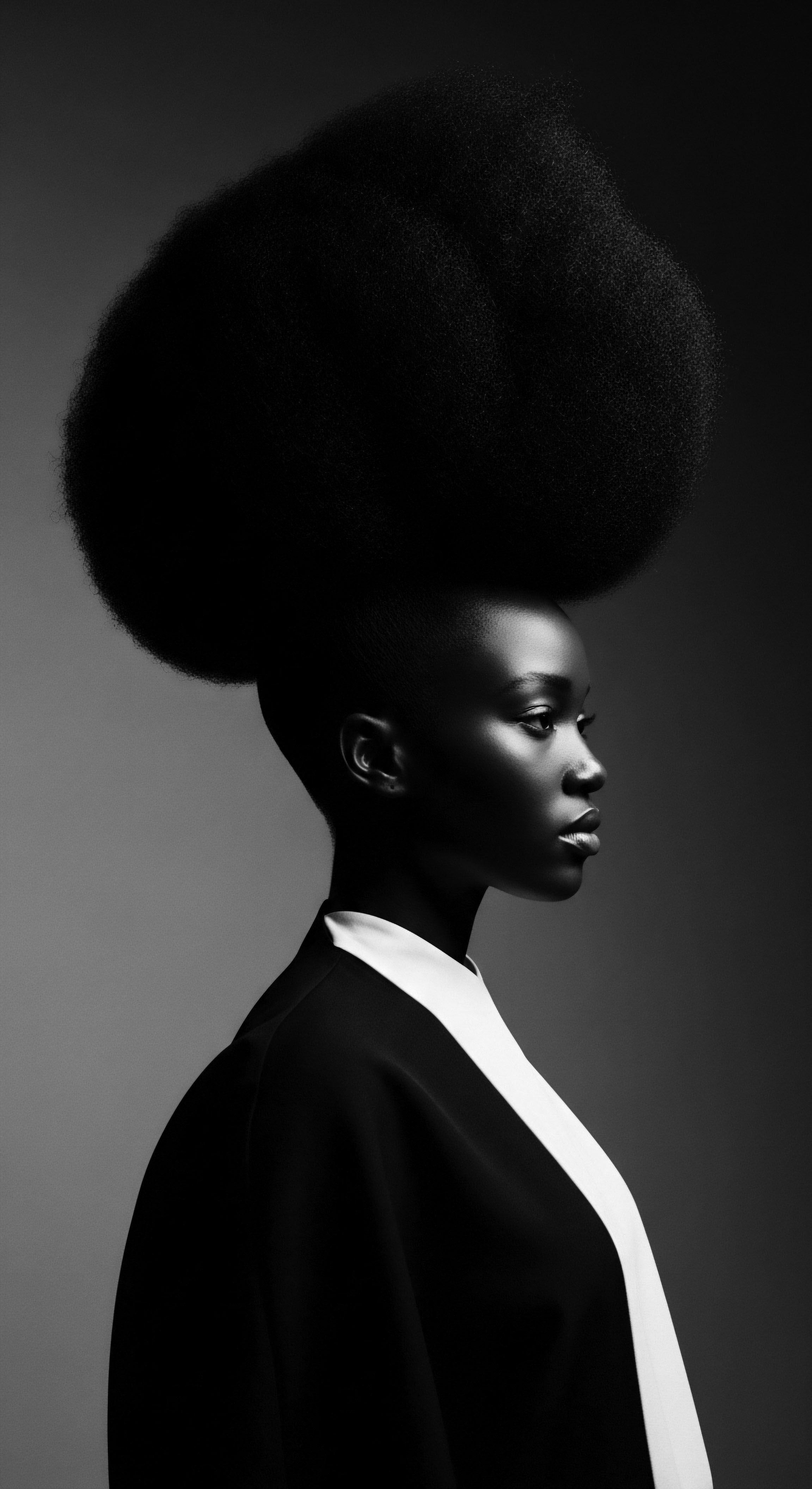
Fundamentals
Within Roothea’s profound ‘living library,’ the term Chemical Hair Straighteners refers to a category of cosmetic preparations designed to permanently alter the inherent structure of hair, rendering tightly coiled or curly strands into a straighter configuration. This transformation, at its most fundamental, involves a carefully controlled chemical reaction that reconfigures the very bonds holding hair’s natural shape. It is a process that moves beyond temporary heat styling, creating a lasting change in texture.
For many with textured hair, particularly those of Black and mixed-race heritage, the introduction of chemical straighteners represented a significant shift in hair care practices. Historically, the management of deeply coiled hair often involved labor-intensive methods or traditional ingredients aimed at moisture retention and elongation, rather than complete structural alteration. The advent of chemical solutions offered a seemingly simpler path to a desired aesthetic, yet it carried with it a complex legacy, intertwined with evolving societal standards of beauty and identity.
Chemical hair straighteners offer a permanent alteration of hair’s natural texture, a concept deeply rooted in the historical evolution of beauty standards for textured hair.

Early Motivations and Basic Chemistry
The yearning for hair that draped rather than sprung, that could be easily combed or styled in ways aligned with dominant beauty ideals, was a powerful motivator for the development and adoption of these chemical preparations. Before their widespread commercial availability, various home concoctions and thermal methods were employed, often with limited success and considerable risk. The chemical straightener promised a more consistent and enduring outcome.
At its core, the chemistry of hair straightening involves disrupting the hair’s natural disulfide bonds, which are the primary linkages responsible for its curl pattern. These bonds are strong and give hair its resilience. Chemical straighteners, primarily alkaline agents, penetrate the hair shaft, causing it to swell and allowing these bonds to be broken.
Once broken, the hair can be physically manipulated into a straight form, and then new bonds are reformed, locking the hair into its new, straightened shape. This process, known as Lanthionization for hydroxide relaxers, creates a permanent change, meaning the altered hair will remain straight until new growth emerges from the scalp.
- Hair Structure ❉ Hair is composed primarily of a protein called Keratin, arranged in a complex fibrous structure.
- Disulfide Bonds ❉ These are strong chemical cross-linkages between cysteine amino acids within the keratin structure, dictating the hair’s natural curl.
- Alkaline Agents ❉ Ingredients like sodium hydroxide, potassium hydroxide, lithium hydroxide, or guanidine hydroxide are common in relaxers, acting as strong bases to break these bonds.

Intermediate
Moving beyond the foundational understanding, the intermediate meaning of Chemical Hair Straighteners requires an exploration of their diverse formulations, their historical trajectory within specific cultural contexts, and the multifaceted implications they held for communities with textured hair. This perspective recognizes that these products were not merely scientific innovations; they were cultural artifacts, reflecting and shaping societal pressures and personal choices.
The chemical straightener’s journey from an accidental discovery to a widespread beauty staple is a narrative rich with cultural significance. Garrett Augustus Morgan Sr. is often credited with inventing an early chemical hair straightener in 1909, an unexpected outcome of his work on a solution to reduce friction in sewing machines. His subsequent marketing of this product to Black and mixed-race individuals marked the beginning of a complex relationship between these communities and chemical hair alteration.
The historical evolution of chemical hair straighteners reveals a deeply intertwined relationship with cultural assimilation and shifting beauty standards, particularly within Black communities.
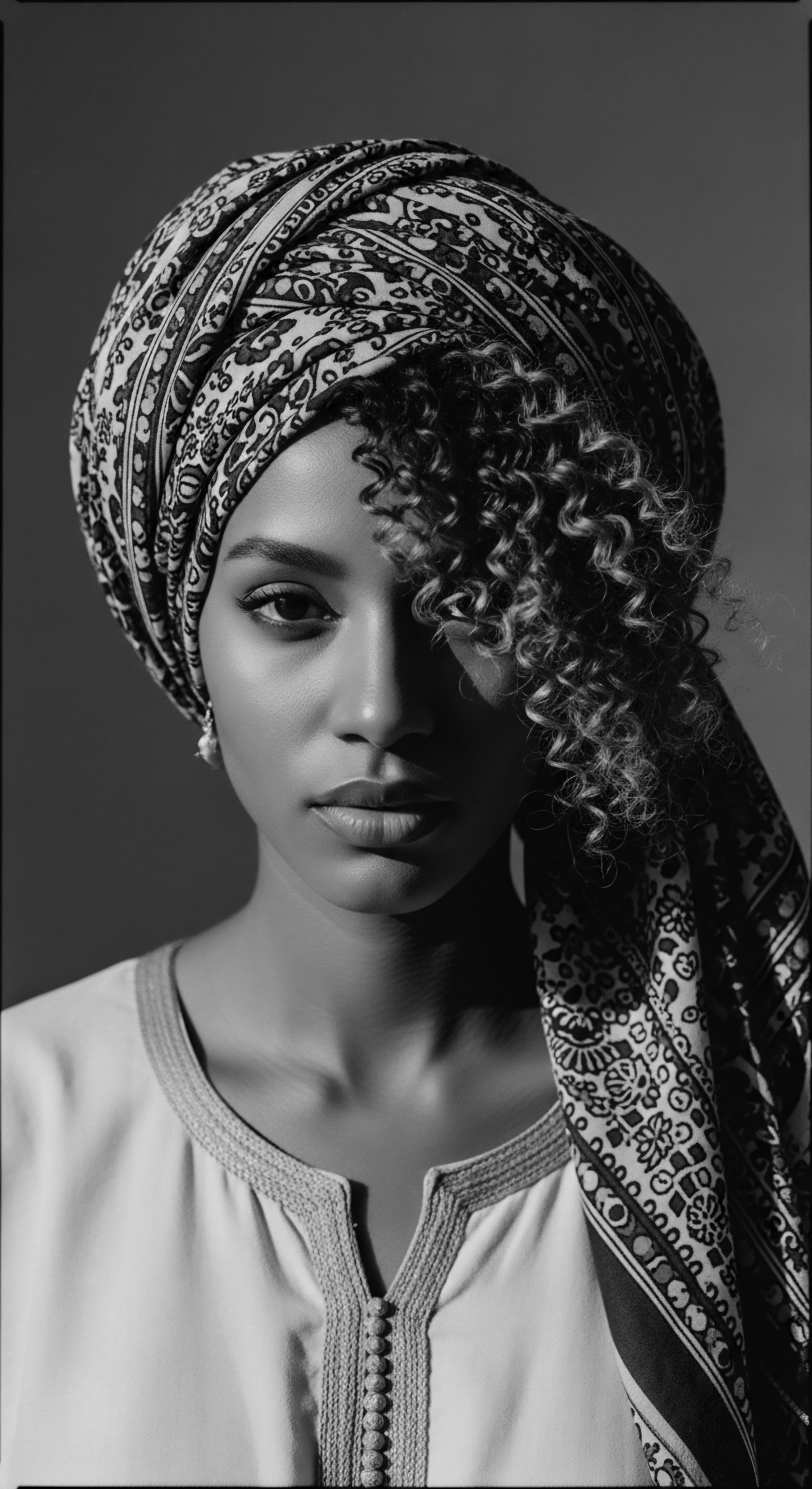
The “Straight Hair Ideal” and Product Evolution
The desire for straight hair, often associated with mainstream beauty standards that historically privileged Eurocentric features, played a substantial role in the adoption of chemical straighteners. For many Black women, achieving straightened hair was perceived as a means to navigate societal prejudices, gain acceptance in professional settings, and conform to prevailing beauty norms. This societal pressure was often reinforced through advertising that displayed images of women with straight, smooth, and silky hair, subtly perpetuating a negative perception of naturally curly hair.
Over time, the formulations of chemical straighteners evolved. Early “lye” relaxers, containing Sodium Hydroxide (NaOH), were highly effective at breaking down hair bonds quickly, but they were also notoriously harsh, causing scalp irritation, burns, and hair damage. The mid-1980s saw a shift with the introduction of “no-lye” relaxers, which utilized milder chemicals such as calcium hydroxide, guanidine hydroxide, or lithium hydroxide. While these formulations aimed to reduce the severity of scalp burns, they still fundamentally altered the hair’s protein structure.
| Era/Type Early 20th Century (Lye Relaxers) |
| Primary Active Chemical Sodium Hydroxide (NaOH) |
| Historical Context/Impact on Heritage Marked a significant departure from traditional hair care, offering a permanent solution to hair texture perceived as "unmanageable" in a society favoring straight hair. |
| Era/Type Mid-1980s Onward (No-Lye Relaxers) |
| Primary Active Chemical Calcium Hydroxide, Guanidine Hydroxide, Lithium Hydroxide |
| Historical Context/Impact on Heritage Aimed to reduce scalp irritation, yet continued to reinforce the straight hair aesthetic as a norm, shaping generations of textured hair experiences. |
| Era/Type This progression illustrates the ongoing tension between the pursuit of altered hair textures and the inherent properties of diverse hair heritage. |

Community Responses and Identity
The pervasive use of chemical straighteners, particularly among Black women, became deeply embedded in personal identity and community norms. Narratives often speak of early experiences with relaxers, sometimes as young as five years old, reflecting a generational practice influenced by maternal choice and a desire for social acceptance. The constant pressure to conform to Eurocentric beauty standards created a sense of self-doubt and the belief that natural hair was somehow inferior.
Yet, this narrative is not singular. The 1960s Civil Rights Movement brought forth a powerful counter-narrative with the rise of the Natural Hair Movement. The Afro, in particular, became a symbol of Black pride and a rejection of conformity, challenging the white-dominated mainstream standards of hair.
This period saw a shift where embracing natural hair became a political statement and a way to honor African roots. Despite this, the economic and social pressures to straighten hair persisted for many, highlighting the complex choices individuals faced in navigating their identity within a society that often discriminated against natural textured hair.
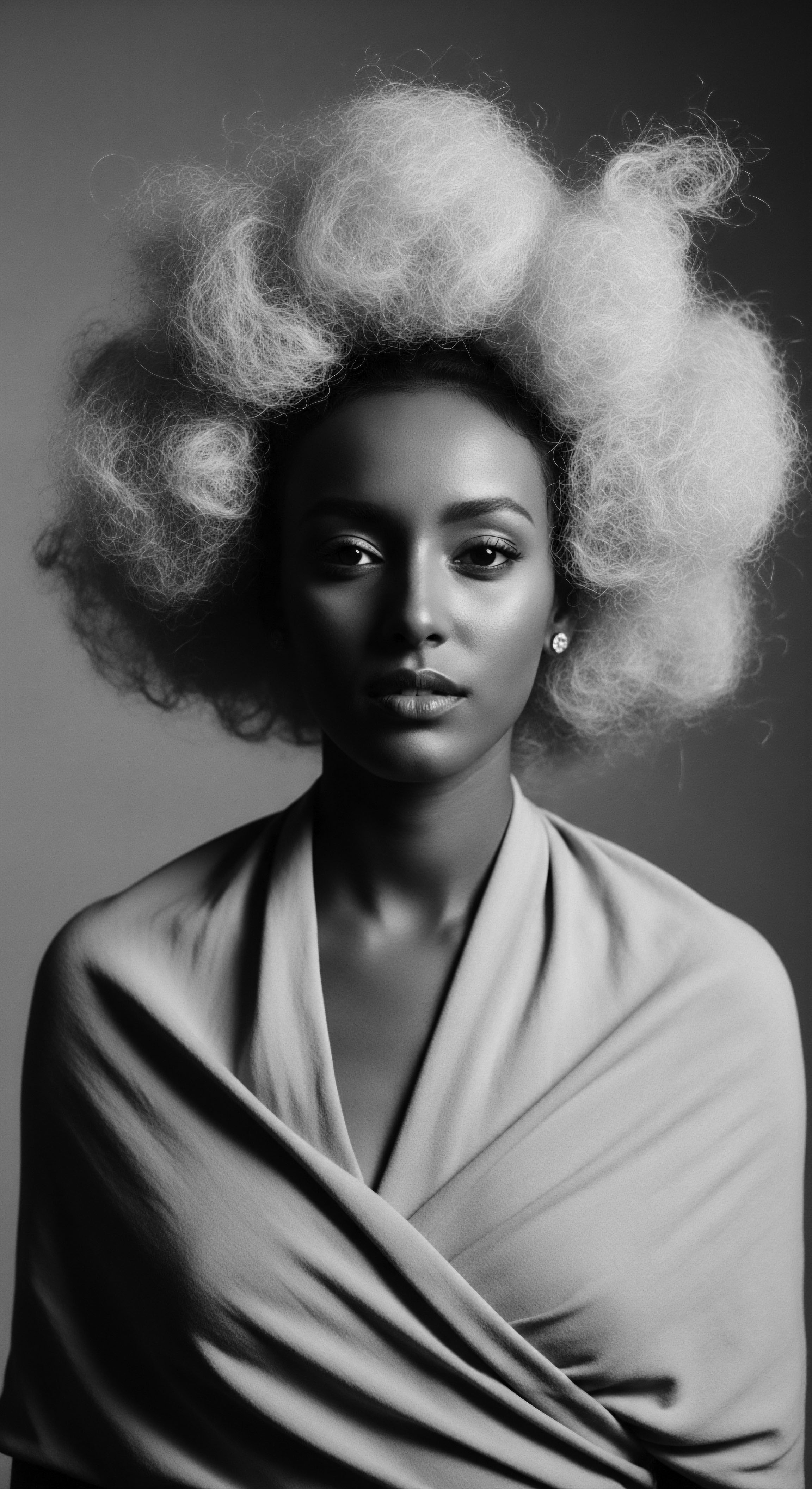
Academic
The academic definition of Chemical Hair Straighteners transcends mere product description, delving into its profound molecular mechanisms, its intricate sociological and psychological implications, and its deep historical roots within the textured hair heritage. This perspective demands a rigorous examination of how these chemical agents interact with the complex biology of hair, alongside an analysis of their pervasive impact on identity, well-being, and socio-economic realities, particularly for individuals of Black and mixed-race descent. It is a comprehensive exploration that acknowledges the scientific underpinnings while consistently centering the human experience and ancestral wisdom.
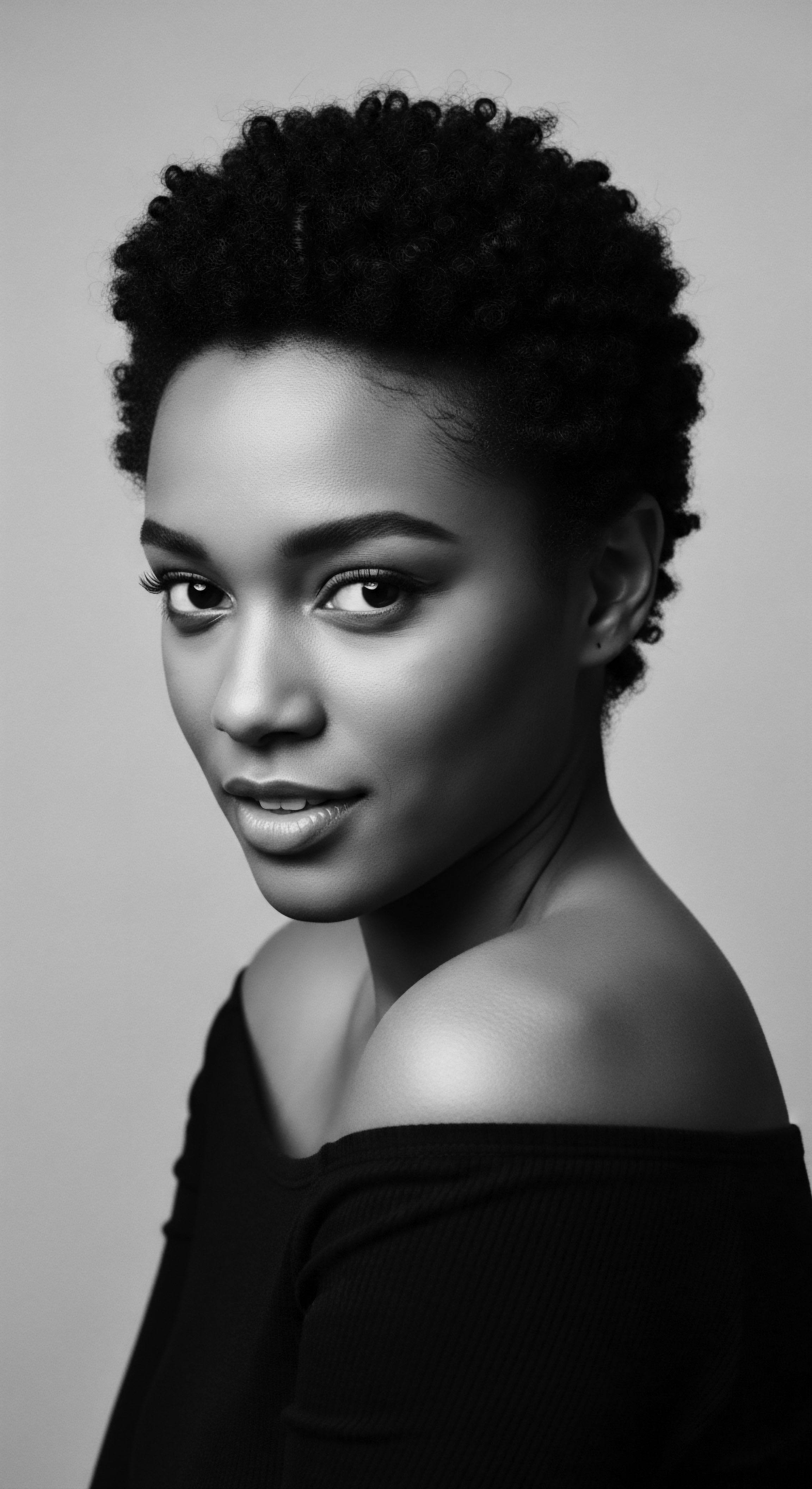
Molecular Alterations and Hair Biology
At a microscopic level, chemical hair straighteners, often referred to as relaxers, function by initiating a process of controlled damage to the hair’s protein structure. The hair cortex, nestled beneath the protective cuticle layer, consists of twisted protein “cables” primarily composed of Keratin. The natural curl pattern of textured hair is largely determined by the shape of the hair follicle and the numerous Disulfide Bonds (S-S bonds) that cross-link the keratin polypeptide chains within the cortex.
Hydroxide relaxers, which include formulations with sodium hydroxide, lithium hydroxide, or guanidine hydroxide, operate through a process called Lanthionization. These highly alkaline compounds, possessing a pH often exceeding 12, cause the hair cuticle to swell and open, allowing the active ingredients to penetrate into the cortex. Once inside, the hydroxide ions abstract acidic alpha protons from the cysteine moieties of hair keratin. This reaction leads to a beta elimination, effectively breaking the disulfide bonds and converting them into lanthionine bonds, which are irreversible.
The hair is then physically manipulated into a straight configuration, and as the new, altered bonds form, the hair’s original curl pattern is permanently elongated. Thio relaxers, utilizing ammonium thioglycolate, operate through a reduction reaction that also splits disulfide bonds, followed by an oxidation step (neutralization) to reform them in a straightened state. The strength of these chemicals, necessary to alter tightly coiled hair, also presents inherent risks, including dryness, brittleness, breakage, and severe scalp irritation or chemical burns.
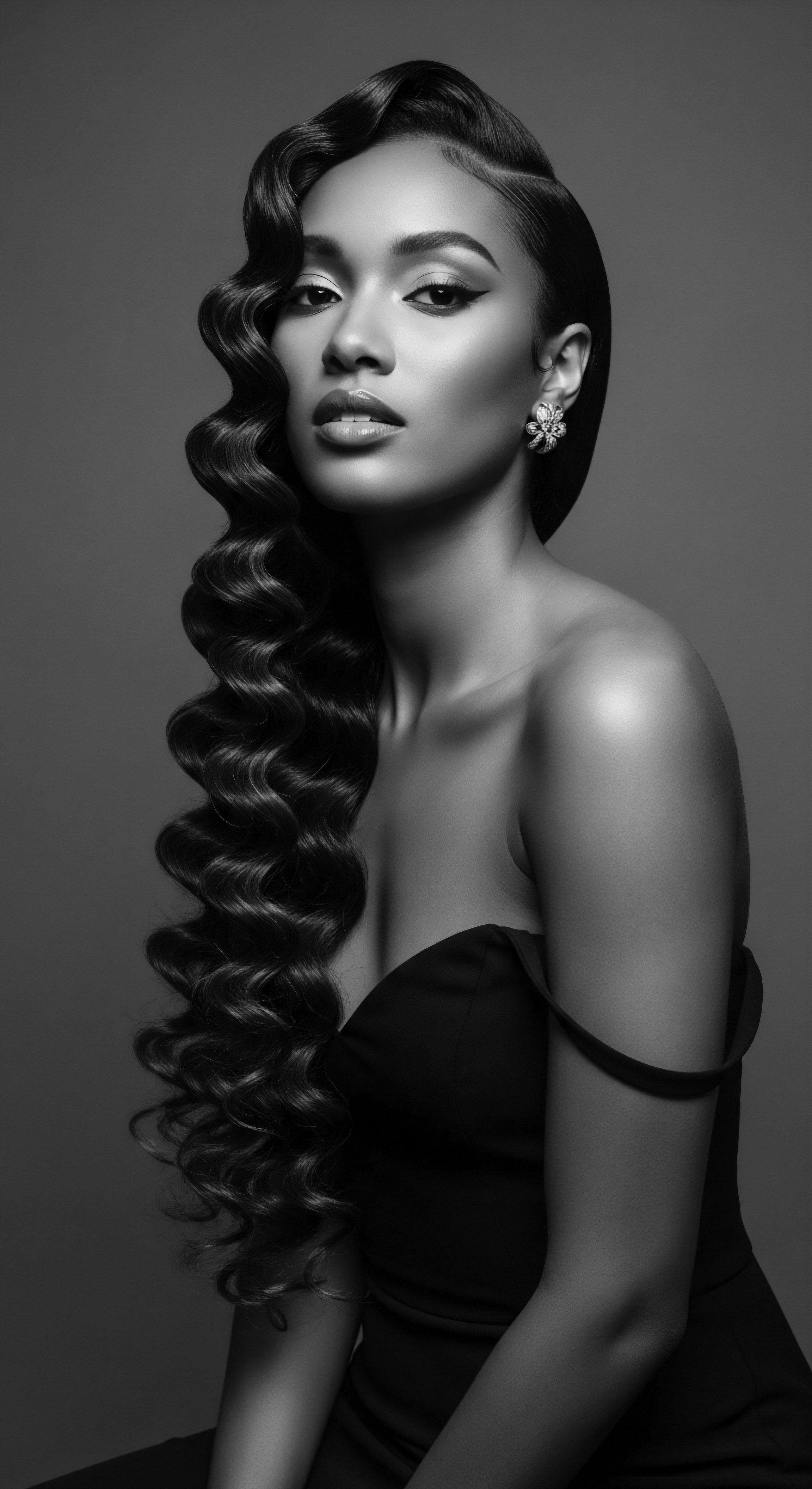
Psychosocial Dimensions and Identity Formation
The decision to chemically straighten hair, particularly within Black and mixed-race communities, is rarely a simple aesthetic choice; it is often a response to deeply ingrained societal pressures and historical biases. The pervasive influence of Eurocentric beauty standards, which have historically privileged straight hair, has led to an internalization of negative perceptions regarding natural textured hair. This phenomenon, sometimes termed “esthetic trauma” by the Association of Black Psychologists, can significantly affect self-esteem, self-acceptance, and personal identity, especially during critical stages of development.
The use of chemical hair straighteners is a complex psychosocial phenomenon, deeply intertwined with the historical struggle for acceptance and the internalization of beauty standards.
Research highlights the profound impact of hair discrimination, where natural hairstyles are often deemed “unprofessional,” “unkempt,” or “bad hair.” A 2020 Harvard University study, as cited in a review by McLane Middleton, concluded that hair products contain parabens, phthalates, and other chemicals that are known to be endocrine disruptors, which interfere with hormones. This discrimination extends into various spheres of life, including schools and workplaces, creating tangible barriers to educational and professional opportunities. For instance, a 2020 study by Michigan State University and Duke University, “The Natural Hair Bias in Job Recruitment,” found that Black women with natural hairstyles were less likely to secure job interviews compared to white women or Black women with straightened hair. This compelling statistic illuminates the tangible socio-economic motivations that often underpin the choice to chemically alter hair, extending beyond mere personal preference to encompass survival tactics within a biased society.
The narratives collected from Black women who underwent chemical hair straightening during their youth reveal a complex interplay of motivations, including the desire for “manageable” hair, a sense of community belongingness, and parental decisions. These experiences, while sometimes leading to physical harm and psychological conflict, also underscore the embeddedness of chemical hair straightening within the identities of Black women, complicating simplistic interpretations of self-hatred and inviting a deeper examination of beauty practices within Black female relationships and identity development. The concept of “good hair” versus “bad hair” continues to shape perceptions, with “good hair” often connoting looser curls akin to European hair textures, and “bad hair” referring to coarse, kinky, or tightly coiled hair. This hierarchy, rooted in the era of slavery, perpetuates internalized racism and self-hatred, making the choice of hair alteration a deeply personal yet socially charged act.

Economic Dynamics and Health Considerations
The industry surrounding chemical hair straighteners has been a significant economic force, particularly within the Black hair care market. Companies like Johnson Products, with their “Ultra Sheen” relaxer, became sensations, recognizing and capitalizing on the demand for straightened hair. However, this economic success has been shadowed by growing health concerns.
Chemical relaxers contain harsh ingredients that can lead to scalp irritation, burns, hair breakage, and thinning. More alarmingly, recent studies have indicated potential links between frequent use of chemical straighteners and serious health risks, including uterine fibroids, early puberty, and certain cancers.
For example, the National Institutes of Health’s Sister Study, published in 2022, reported a higher risk of uterine cancer among women who frequently used chemical hair straightening products compared to those who did not. This research found that women using these products more than four times annually faced a 2.5 times higher risk of developing uterine cancer. Such findings underscore the critical need for awareness and for the removal of harmful products from the market, especially given that Black women use these products more frequently and often initiate use at earlier ages than other racial and ethnic groups.
The economic landscape is now experiencing a paradox ❉ while lawsuits alleging links to health risks are rising in the United States, African markets are seeing a surge in relaxer sales, driven by cultural beauty standards and economic factors. This dichotomy reflects the enduring, complex influence of historical beauty ideals and market forces on global hair practices.
The journey of chemical hair straighteners, from their chemical genesis to their widespread cultural adoption and the contemporary re-evaluation of their impact, provides a compelling lens through which to examine the profound interplay of science, society, and ancestral heritage. Understanding its complete meaning necessitates acknowledging both its technical function and its deep cultural resonance, especially for those whose hair carries the stories of generations.
- Keratin Denaturation ❉ The process by which the strong alkaline chemicals cause the keratin proteins in hair to lose their natural structure, making them pliable for reshaping.
- Disulfide Bond Cleavage ❉ The essential chemical reaction where the bonds responsible for curl are broken, a permanent alteration for hydroxide relaxers, forming new, stable lanthionine bonds.
- Alkaline Hydrolysis ❉ The specific chemical reaction of strong bases with the hair’s protein structure, leading to the breaking of bonds and softening of the hair.
- Hair Discrimination ❉ The systemic bias against natural or textured hair, often rooted in Eurocentric beauty standards, leading to social, economic, and psychological consequences for individuals with textured hair.

Reflection on the Heritage of Chemical Hair Straighteners
The narrative of Chemical Hair Straighteners within Roothea’s ‘living library’ is far more than a mere chronicle of chemical innovation; it is a profound meditation on the enduring spirit of Textured Hair Heritage. From the ancient rhythms of ancestral hair care, steeped in natural oils and communal rituals, to the transformative, sometimes challenging, journey through modernity, these chemical agents have etched themselves into the very fabric of identity and self-expression for countless individuals of Black and mixed-race descent. The echoes from the source, the tender thread of care, and the unbound helix of future possibilities all intertwine in this intricate story.
For generations, the manipulation of hair has been a language of culture, a marker of status, and a testament to resilience across African communities. Practices such as braiding, threading, and the use of natural butters and herbs were not simply aesthetic choices; they were expressions of identity, spiritual connection, and community cohesion. The arrival of chemical straighteners, while offering a perceived solution to societal pressures, also introduced a complex tension ❉ a departure from ancestral practices in pursuit of an aesthetic often imposed by external forces. This tension highlights the enduring legacy of hair as a site of both personal agency and societal contestation.
As we contemplate the journey of these chemical agents, we are invited to consider the wisdom inherent in traditional approaches to hair care, which prioritized nourishment and protection. The contemporary resurgence of the natural hair movement, a powerful affirmation of inherent beauty and cultural pride, stands as a testament to the enduring power of ancestral wisdom and the reclamation of self. It is a collective sigh of relief, a joyful return to the textures that are intrinsically ours, acknowledging the historical struggles while charting a path towards holistic wellness that honors every strand.
The story of chemical hair straighteners, then, becomes a poignant chapter in the larger saga of textured hair. It reminds us that beauty is not monolithic, nor is it dictated by external standards. Instead, it is a radiant, diverse expression of heritage, self-love, and the boundless capacity for adaptation and affirmation. Roothea’s living library holds this entry not as a judgment, but as a testament to the complex journey of hair, urging us to remember the past, understand the present, and consciously shape a future where every texture is celebrated in its authentic splendor.
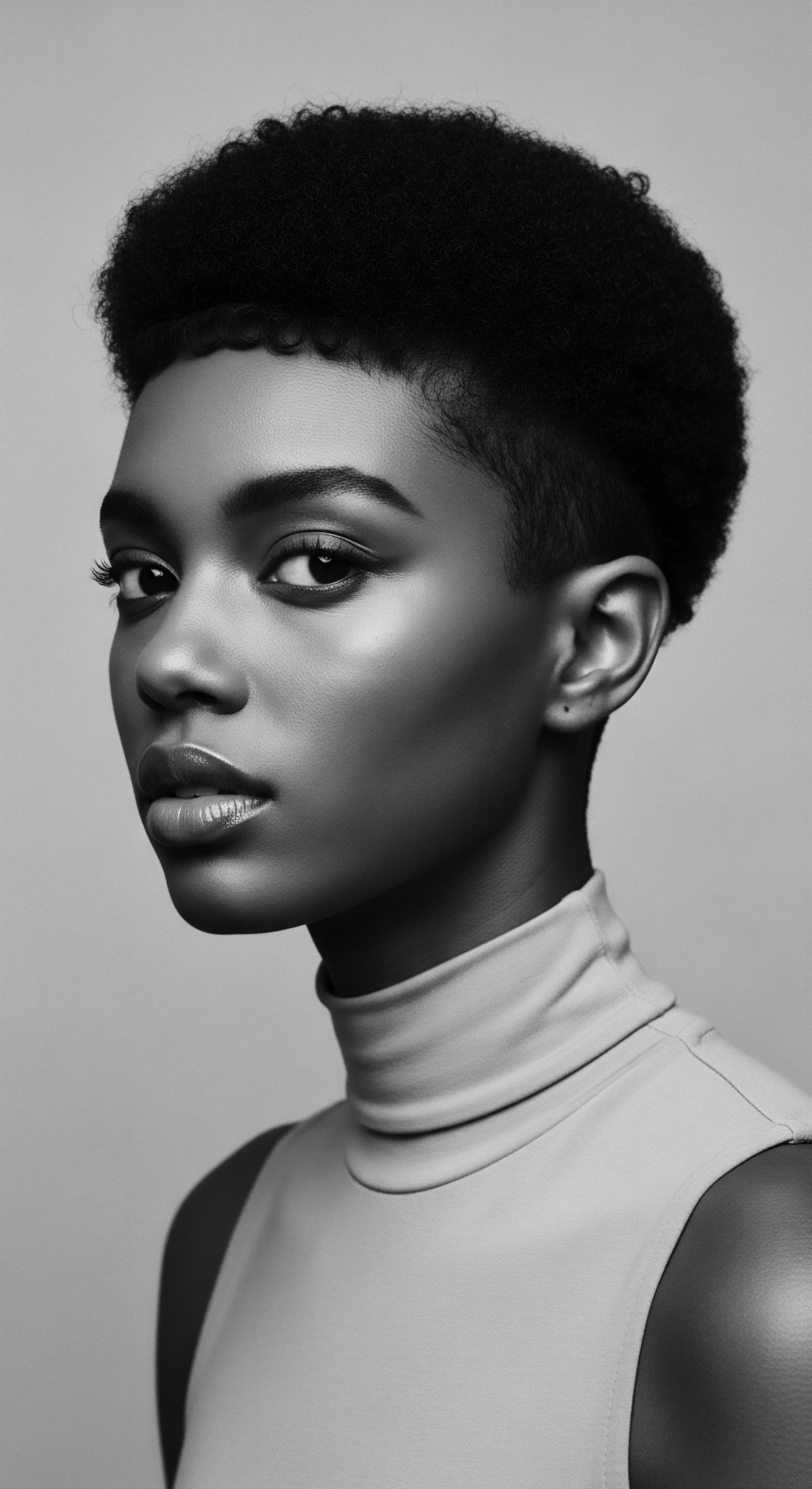
References
- Abrams, L. S. Maxwell, K. & Abrams, C. (2020). Hair Stories ❉ Race, Gender, and the Politics of Black Women’s Hair. New York University Press.
- Banks, I. (2000). Hair Matters ❉ Beauty, Power, and the Politics of Hair in African American Culture. New York University Press.
- Bencosme, Y. (2017). Beauty is Pain ❉ Black Women’s Identity and Their Struggle with Embracing Their Natural Hair. Perspectives, 9(1), Article 1.
- Chapman, S. (2008). Hair, Race, and Identity ❉ The Politics of Hair in African American Women. Routledge.
- Davis, A. (2016). Women, Race, & Class. Vintage Books.
- Etemesi, B. (2007). Impact of hair relaxers in women in Nakuru, Kenya. International Journal of Dermatology, 46, 23-25.
- Johnson, T. A. & Bankhead, T. (2014). Examining the Experiences of Black Women with Natural Hair. Scientific Research Publishing, 5(1), 89-98.
- King, T. & Niabaly, A. (2013). The Politics of Black Hair. Palgrave Macmillan.
- Mbilishaka, A. & Apugo, N. (2020). The Hair Care Revolution ❉ A Holistic Guide to Healthy Hair for All Textures. Hay House.
- Nkimbeng, M. Rumala, B. B. M. Richardson, C. M. & Taylor, J. L. (2023). The Person Beneath the Hair ❉ Hair Discrimination, Health, and Well-Being. International Journal of Environmental Research and Public Health, 20(15), 6520.
- Patton, M. (2006). Twisted ❉ The Dreadlock Chronicles. Broadway Books.
- Robinson, A. (2011). Hair, Race, and Identity ❉ An Exploration of African American Girls’ Understanding of Colorism and Skin Tone. Journal of Black Psychology, 37(3), 358-380.
- Thompson, C. (2008-2009). Black Women and Identity ❉ The Hair Experience. Journal of Pan African Studies, 2(6), 200-215.
- White, D. (2005). The Clasping Hands ❉ The Politics of Hair in African American Women. Rutgers University Press.
